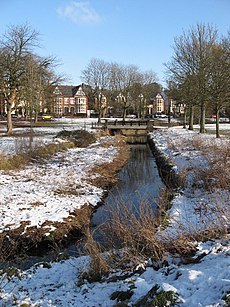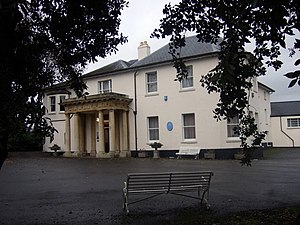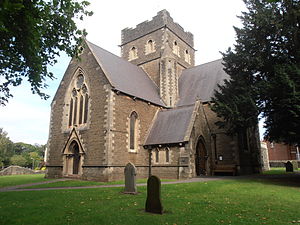Roath

Roath is a ancient parish of Glamorgan, forming a suburb in the south-east the city of Cardiff. The parish contains Roath itself, as well as Pengam, Pen-y-lan and Splott. It lies to the east of the city centre, and is the south-easternmost parish in the county, adjacent to the border with Monmouthshire.
Description
Its main shopping streets are Albany Road, City Road, and Wellfield Road. The area is characterised by its several tree-lined avenues and Victorian-era terraced streets. Roath houses a very diverse population including a large number of students, being very close to the main university campuses, a large ethnic minority population and many young professionals. Parts of Roath are among the most affluent districts of Cardiff, although subdivision of the large Victorian properties is starting to occur in the areas to the south end.
Its close proximity to the city centre, its number of local amenities, churches, shops and restaurants and public houses and the famous Roath Park make it a popular area to live.[1]
History

The name is believed to originate from the Irish ráth, 'fort'. Alternatively, it could derive from the name given to the River Taff, Ratostabius.
Roath Court is a nineteenth-century villa on the site of the mediæval manor house of Roath.[2] Since 1952 it has been a funeral home.[3] Its Georgian portico, designed by Robert Adam in 1766 for Bowood House, Wiltshire, was moved there in 1956.[2]
The parish church of Saint Margaret of Antioch was built in 1870 on the site of an earlier Norman chapel. The Gothic-revival church was designed by Llandaff architect John Prichard on a Greek Cross plan, financed totally by John Crichton-Stuart, 3rd Marquess of Bute, in spite of his conversion to Catholicism in 1868. Inside is an opulent mausoleum housing tombs of nine members of the Bute family, including the First Marquess and his wives. The tower of St Margaret's was finally completed in 1926.
Roath once had a railway station on the Great Western main line, but this closed in 1917.
Amenities

- Cardiff University, Engineering Building
- Roath Library
- Monumental Inscriptions for St. Margarets[4]
- Mackintosh Sports Institute (formerly Plasnewydd)
- The Gate,[5] arts centre
- James Summers Funeral Home, Roath Court
- Shah Jalal Mosque, Crwys Road (formerly Capel Crwys)
- Trinity Methodist Church
- Albany Primary School[6]
- Roath Park Primary[7]
- St Martin's Church, Albany Road[8]
- Hodges' Residence and the Dewmisters Crib
- St Edward's Church, Blenheim Road[9]
- Roath Park
- St Peters RFC
Festivals and events
Since 2009 the annual Made in Roath arts festival has taken place in October. The event showcases art, music, performance and literature in a variety of venues including peoples' homes.[10]
Notable people
- William Cope, 1st Baron Cope, politician and international rugby player
- Lionel Fanthorpe
- Peter Finch, writer and poet
- Boyd Clack, Writer, actor and playwright
- Brian Hibbard, Musician
References
- Location map: 51°29’28"N, 3°9’38"W
- ↑ http://www.theguardian.com/money/2011/apr/23/lets-move-to-roath-and-cathays-cardiff
- ↑ 2.0 2.1 Newman, John (1995). Glamorgan. The Buildings of Wales. London: Penguin.
- ↑ "James Summers & Son Funeral Directors, Cardiff". http://www.mylocalfuneraldirector.co.uk/funeralhome/jsummers-cardiff/. Retrieved 8 February 2015.
- ↑ Cefnpennar.com
- ↑ Thegate.org.uk
- ↑ http://www.albanyprm.co.uk/
- ↑ http://www.roathparkprimaryschool.co.uk/contact-details/
- ↑ stmartininroath.webplus.net
- ↑ Roath.org.uk
- ↑ Graham Henry, 'Made in Roath festival returns', South Wales Echo, 14 October 2011. Retrieved 2012-10-17.
Outside links
| ("Wikimedia Commons" has material about Roath) |
- RoathCardiff.net, Community news and information about Roath in Cardiff
- Geograph.co.uk, photos of Roath and surrounding area
- Roathcardiff.com, History and photos of Roath
- Madeinroath.com, Arts festival and community project in Roath
